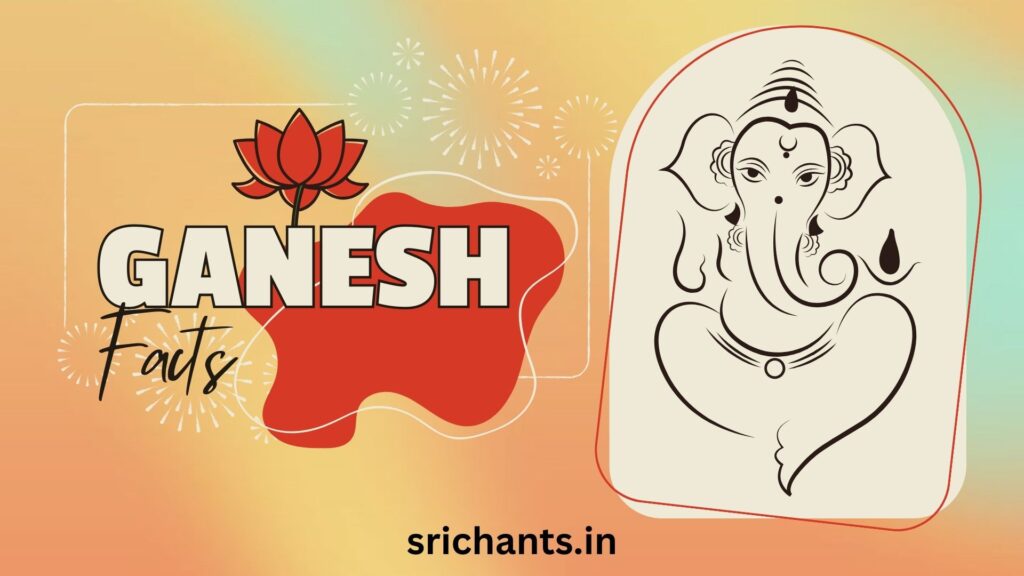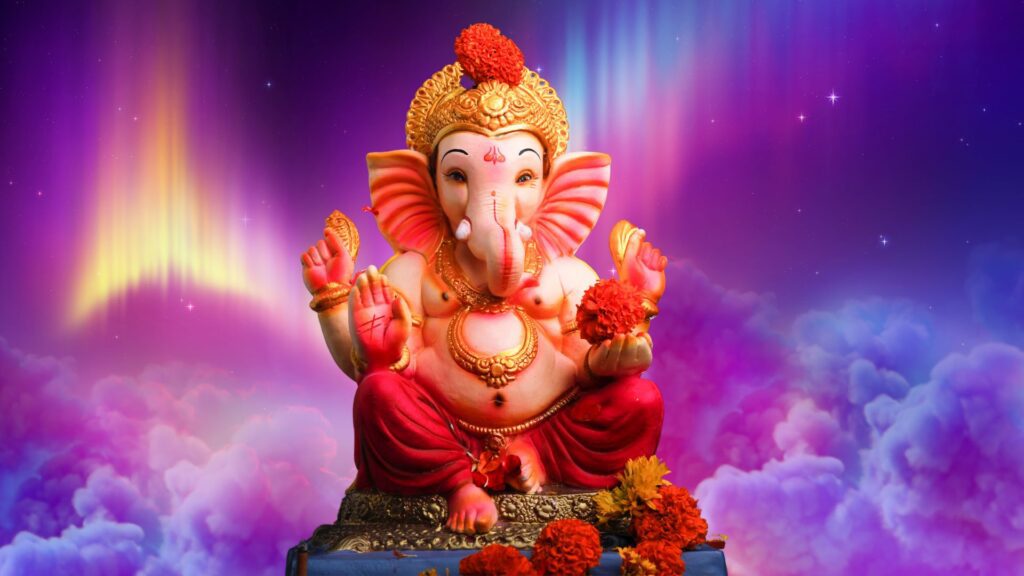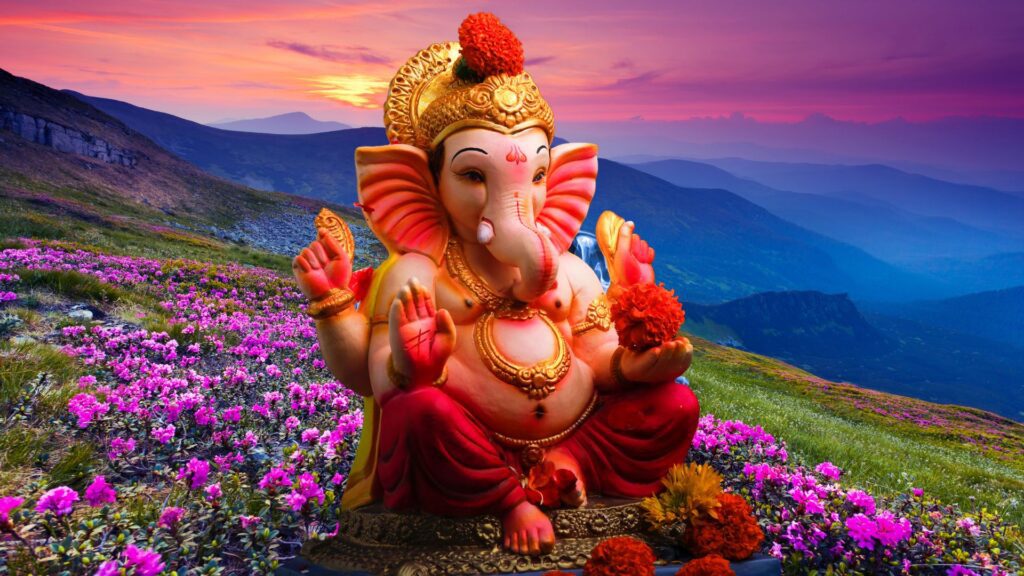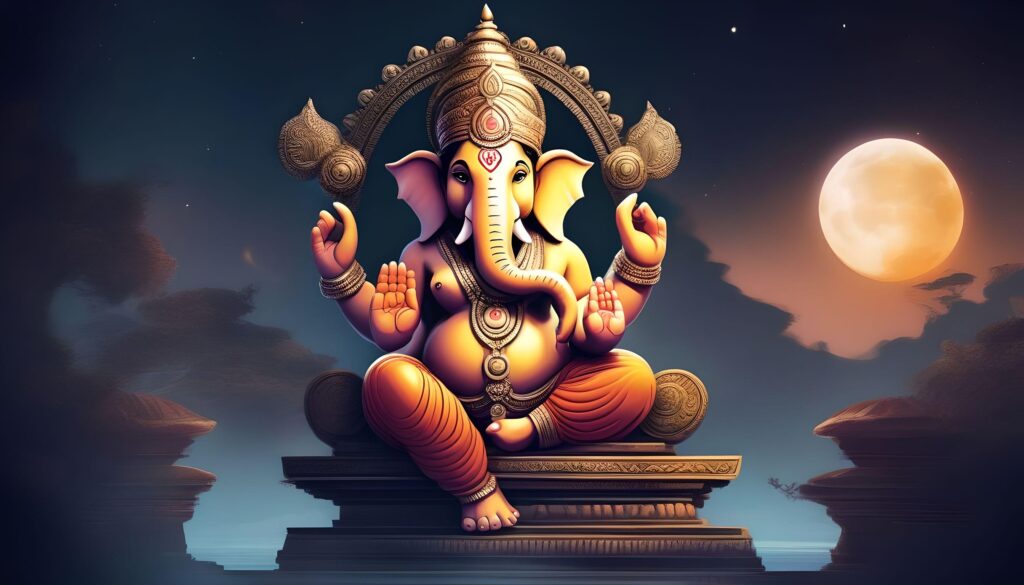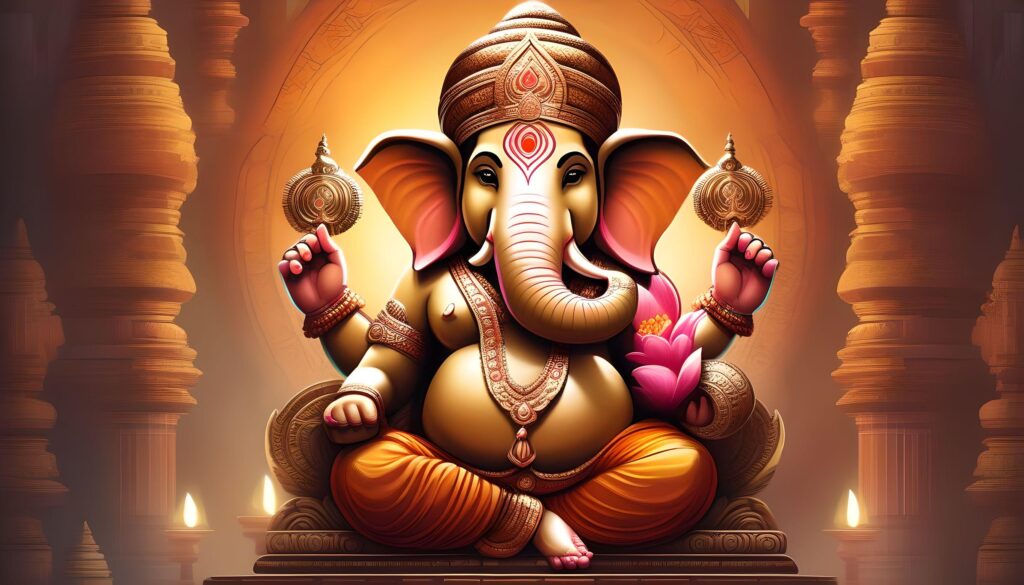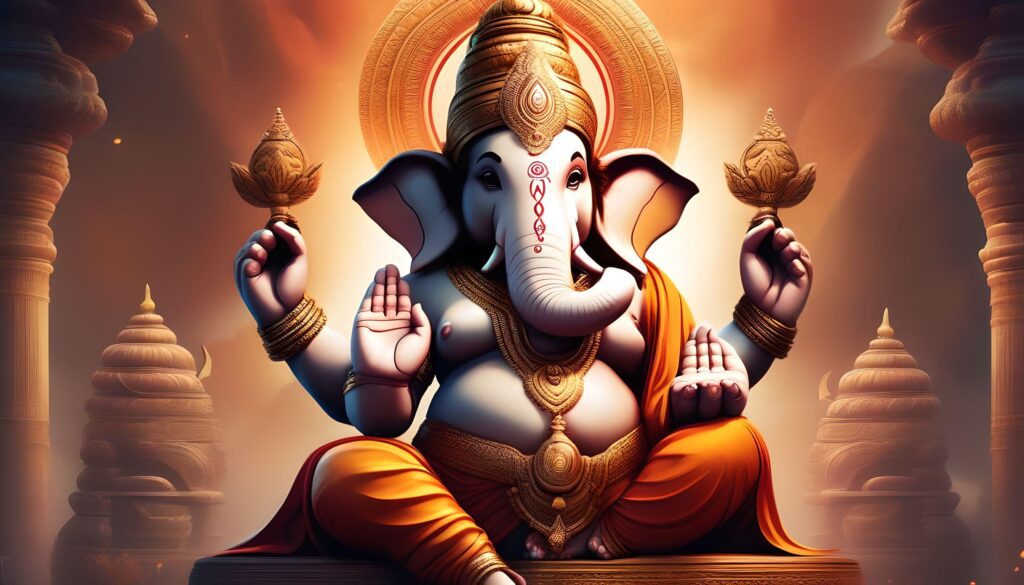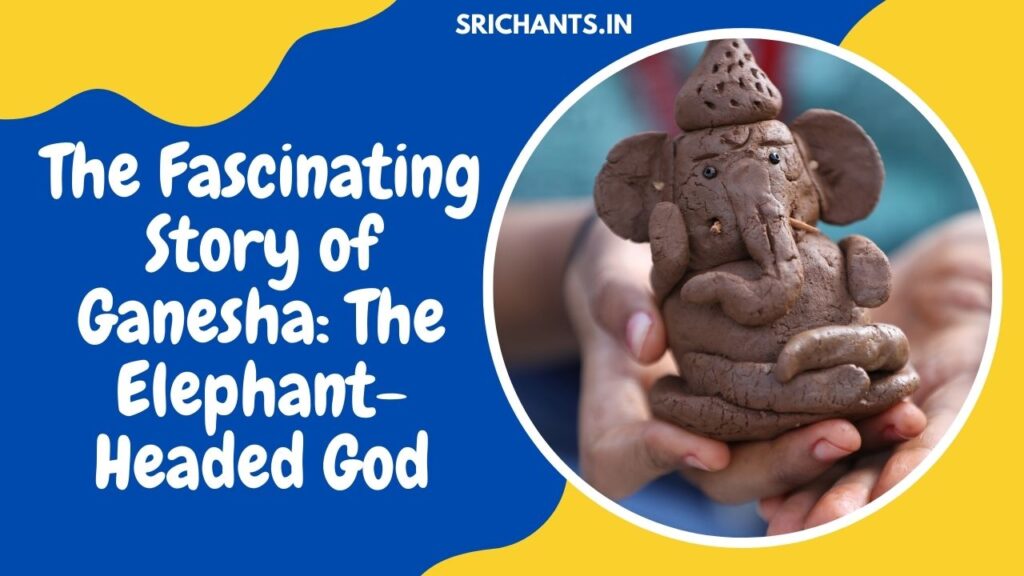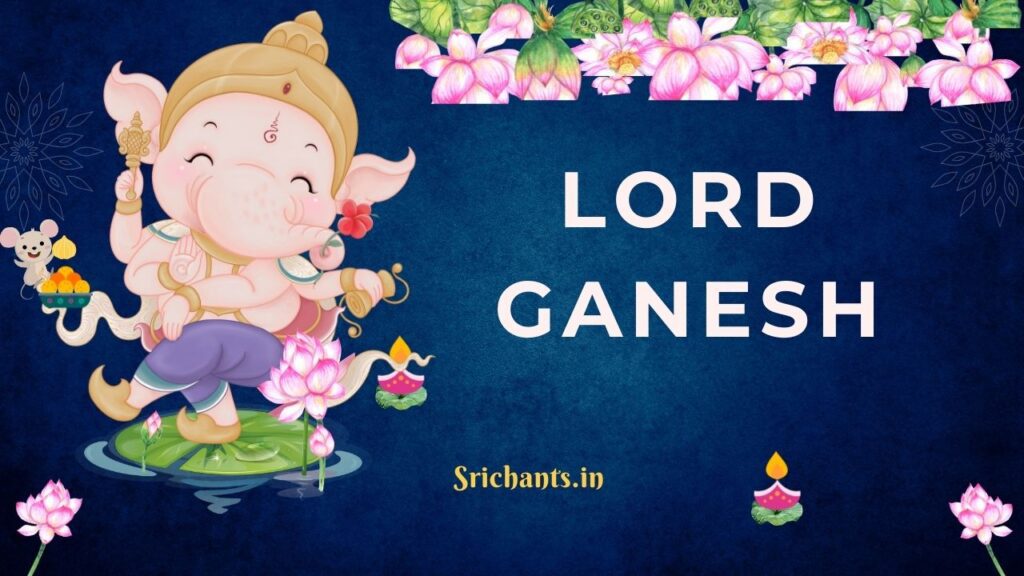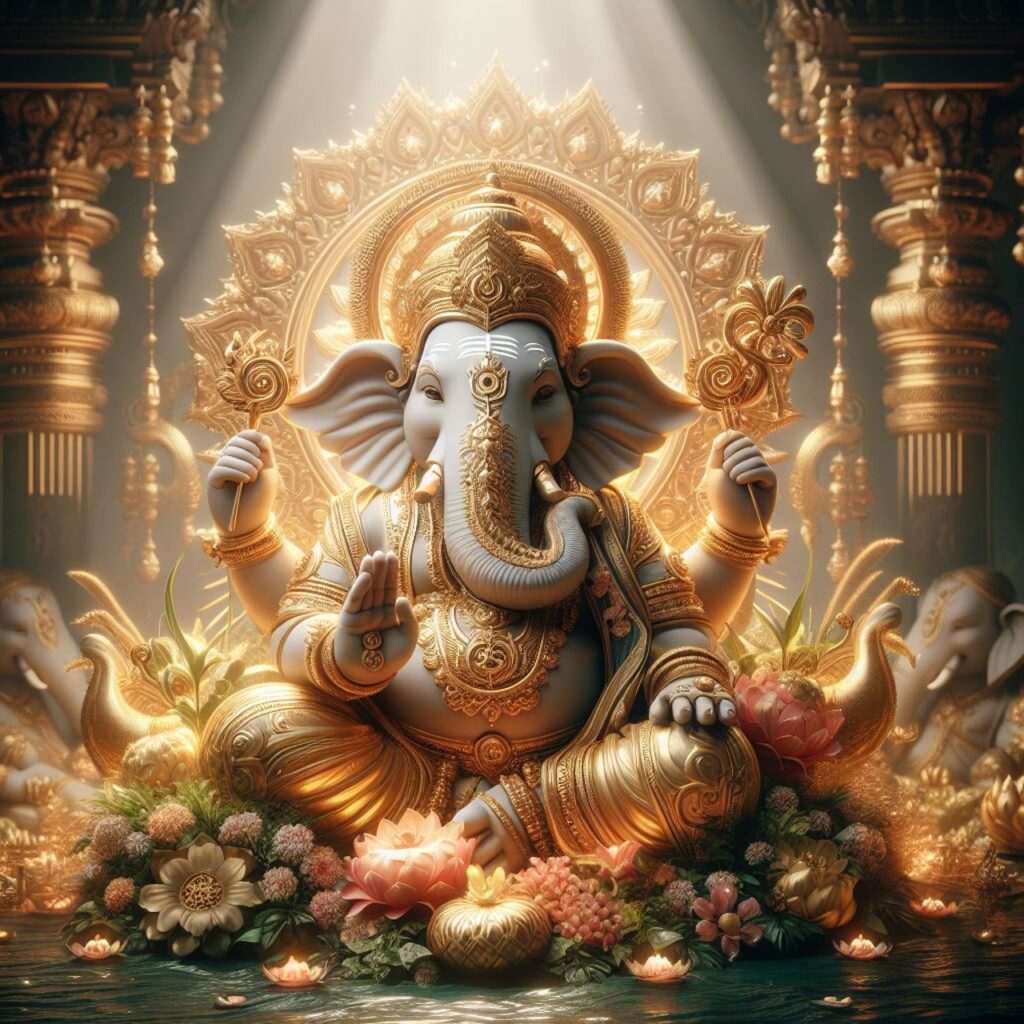Facts About Ganesha | Lesser-known Myths and Stories About Lord Ganesha
Introduction
The cherished Elephant God, Lord Ganesha, is venerated by millions of individuals worldwide. Although the prevalent mythologies and legends pertaining to Ganesha are widely recognized, there exist a number of lesser-known anecdotes that contribute to the complexity and fascination of his persona. This article aims to examine several intriguing narratives that illuminate the profound symbolism and mythology linked to Lord Ganesha.
The Unique Birth of Lord Ganesha
An obscure narrative concerning the origin of Lord Ganesha can be discovered in the Brahma Vaivarta Purana. As per the account, subsequent to Parvati’s fulfillment of a yearly fast in order to appease Lord Vishnu, he assumed the form of Shiva and Parvati’s son.
The divine beings were cordially invited to behold the birth of this endearing child. Nevertheless, Shani, the progeny of Surya, refrained from addressing the infant on account of a curse that inflicted upon him the malignant gaze. Shani eventually gazed at the infant, resulting in the detachment of the infant’s head, per Parvati’s insistence. Following his haste to the banks of the Pushpa-Bhadra, Vishnu returned bearing the severed head of a juvenile elephant, which was subsequently appended to the disembodied form of Ganesha.
Symbolic Significance of Lord Ganesha
Ganpati, the affectionate name given to Lord Ganesha, is an extraordinary amalgamation of four entities: a rodent, an elephant, a man, and a serpent. Every individual element possesses profound symbolic importance. The human element symbolizes the perpetual pursuit of humanity to attain unity with the natural world. The elephant is symbolic of the spirit, which is regarded as the pinnacle of human existence. The cycle of life and mortality is symbolized by the serpent, whereas the trappings of earthly existence are represented by the mouse.
Lord Ganesha as the Scribe of the Mahabharata
An intriguing anecdote from Hindu mythology recounts how the sage Vyasa beseeched Lord Ganesha to transcribe the recitation of the epic Mahabharata. However, Vyasa was required to recite the entire epic uninterrupted by Ganesha as a condition. Vyasa then demanded that Ganesha guarantee that he would comprehend the verses prior to transcribing them. An unprecedented partnership between Vyasa and Ganesha produced one of the preeminent literary works in the annals of history.
Lord Ganesha’s Popularity Beyond Hinduism
The notoriety of Lord Ganesha transcends the boundaries of Hinduism. In Mahayana Buddhism, he is frequently portrayed in a swaying posture in the form of the deity Vinayaka. Delightfully regarded, Lord Ganesha is revered in Tibet, China, and Japan, with each region contributing its unique regional attributes to his embodiment. In North China, the earliest stone statue of the Elephant God was erected in 531 AD, demonstrating the deity’s enduring influence on Buddhist art and culture.
The Power of Myths and Beliefs
Throughout history, cultures and traditions have been profoundly influenced by myths and beliefs. Celebrated with great zeal, the Ganesh Chaturthi festival is accompanied by a variety of rituals and customs. An extensively disseminated belief pertains to the prohibition of gazing at the moon throughout the ten-day festival. There is a belief that observing the moon on purpose during this time period could result in unfounded accusations being levied against one. However, in the event that one inadvertently catches a glimpse of the moon, reciting the Puranas’ samantaka jewel tale can serve as a protective chant.
Conclusion
Beyond the familiar anecdotes, the mythologies and stories surrounding Lord Ganesha offer a more profound comprehension of his persona and symbolic significance. His mythology is enriched by his singular birth narrative, symbolic embodiment of Ganesha, position as the scribe of the Mahabharata, and widespread acclaim that extends beyond the confines of Hinduism.
In observance of Ganesh Chaturthi and in reverence for Lord Ganesha, it is worthwhile to explore these lesser-known facets of his divine persona and recognize the profound cultural importance of these anecdotes and legends.
Additional Information:
- As the deity of intellect and wisdom, as well as the remover of obstacles, Lord Ganesha is venerated.
- In many regions of India, Ganesh Chaturthi is a ten-day festival celebrated with magnificence and devotion.
- The syamantaka jewel is a renowned gemstone that is linked to a multitude of Hindu mythological narratives, among which are Lord Krishna and Lord Surya.
- Numerous artistic representations of Lord Ganesha feature multiple limbs, each of which bears a symbolic object—be it a lotus, an axe, a noose, or a modak—a sweet delicacy.
- An additional collection of appellations for Ganesha includes Vinayaka, Vighneshvara, and Ganapati.
